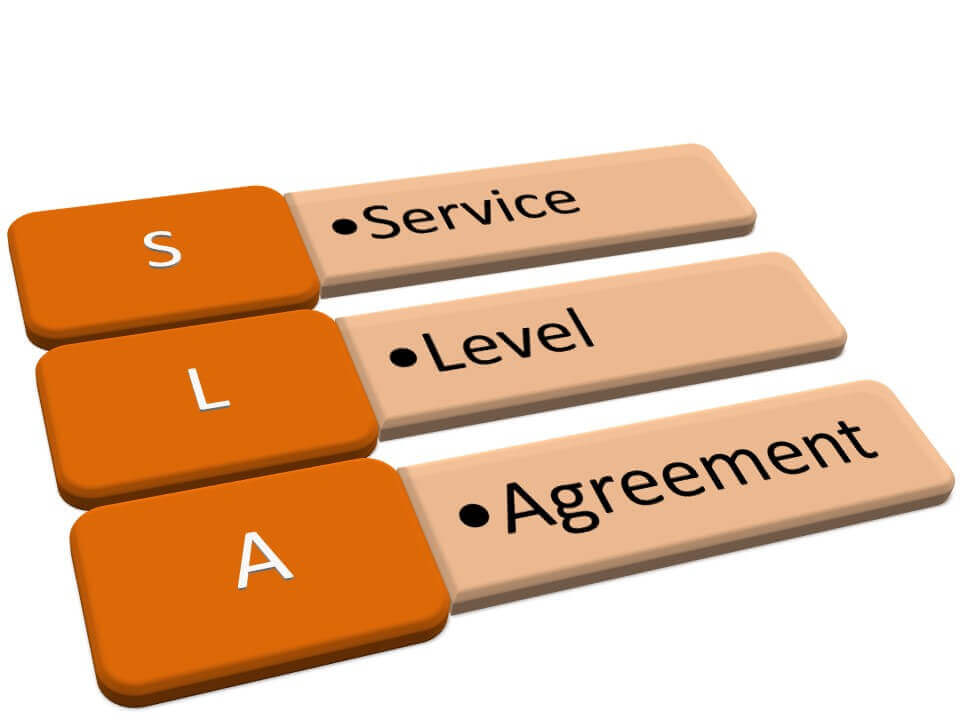
What is SLA: Everything That you Need to Know
SLAs are critical components of any vendor contract, be it technical or outsourcing. It effectively lays down the quality metrics to be measured, the standard expectations, and responsibilities. Moreover, it also explains the remedies in case the specified requirements are not met.
An SLA is a documented contract between customers and service providers. It states the service provider is obliged to provide and the expected level of service to be provided.
Today, most people understand the importance of SLA. However, the whole concept and the complex task of developing one might seem daunting. So read along with this article as it explains what SLA is and why you need it.
What Is a Service Level Agreement?
SLA stands for Service Level Agreement. It is a formal or informal contract, depending upon the situation. SLA includes the service level that a customer expects from the service provider. The metrics help to take the follow-up of the SLA efficiency.
Most often, SLA agreements are set between companies and external suppliers. Sometimes, it is also between the two different departments of one company.
It clarifies what the client will receive. It also specifies what the service provider expects. This means the consent of both parties is mentioned over there.
The SLA originated from network service providers. Now, this agreement has diffused in the entire IT world. Even it is reaching beyond the IT world and penetrating the performance of every outsourced service.
It is a critical component of a contract. A contract is going to be held between vendors and outsourcing companies.
Below are some of the statements that are included in the SLA. You can go through this checklist. You can also add these factors to your agreement.

SLA checklist:
- Statement of objectives
- Scope of the services that will be covered
- The responsibilities of service providers
- Customer's Responsibilities
- Penalties that will be charged for the contract breaches
- Performance metrics that include resolution time or response time, etc
Why Are SLAs So Important in Customer Service?
SLAs are necessary for service providers. They use it to manage customers' expectations. These SLAs define the severity levels under which service providers are not liable for performance issues.
Apart from the service providers, customers can also take advantage of SLAs. The contract explains the service. The customer can compare the services of one vendor's SLAs with another.
The SLA is one of the two fundamental agreements of service providers. Many service providers build a master service agreement for establishing the terms and conditions which will be applicable to the customers.
In the service provider's master service agreement, the SLA is incorporated by reference. The SLA adds specificity regarding the services provided. Additionally, it also covers metrics that will be adopted to measure performance.
SLAs evolved in the late 1980s when IT outsourcing emerged. SLAs set the expectations for the performance of service providers. It also includes the penalties for missing the targets or bonuses for exceeding the targets.
SLAs keep evolving to address the new approaches and goals. It also characterizes the newer contracting methods. This way, service-level commitments are used to produce broad agreements that cover every customer of service providers.

Key Components of an SLA
The major components that are included in the Service Level Agreement are:
Agreement overview
The first section is an overview of the agreement. It includes the basic details of the contract. The start date of the agreement is provided. The parties that are involved and services’ general introduction is also mentioned in SLA.
Description of services
The details of the services that are being offered should also be mentioned. The turnaround time and all possible circumstances are also mentioned.
Typically, the following descriptions are mentioned in SLA:
- Ways services are delivered
- Whether the maintenance service is offered or not
- Operation hours
- Outline the processes
- List of all technology and applications that will be used.
Exclusions
The services that are not included should be mentioned clearly. In this way, no confusion will be created afterward.
Service performance
Performance measurement metrics are also defined. The service provider and client agree on a list of all the metrics. Later, they will use those matrices to measure the service levels. This way, the performance of the service provider will be assessed from time to time.
Redressing
Many times the providers fail to provide what is mentioned in SLA. The companies also mention compensation so that no mess hits them in the future.
Stakeholders
The parties that are involved in the agreement are also mentioned. So, the customer and provider clearly know who will question whom.
Security
The security measures that will be taken by the service provider are also defined. This section covers different security terms. Consensus on anti-poaching and Drafting, Nondisclosure agreements, and IT Security is defined here.
Risk management and disaster recovery
Disaster recovery and risk management should also be established. Clear communication on these risks can save the parties from future worries.
Service tracking and reporting
In this section, tracking intervals, reporting structure, and stakeholders are included.
Periodic review and change processes
All the Key Performance Indicators (KPIs) should be reviewed regularly. This is an appropriate process for making modifications. Periodic review and changes process must be defined in SLA.
Termination process
The SLA also consists of the terms and conditions when the agreement will be terminated or expired. The notice period is also established.
Signatures
Finally, all authorized participants and stakeholders sign the document. It shows the approval of both parties. Additionally, it also indicates that all the processes and details are acknowledged by everyone.

What Kind of Metrics Should Be Monitored?
It is essential to measure the performance of the service provider. SLA provides you with specific metrics to assess the performance of your service provider. But remember to hold him accountable only for those metric performances which he specified to fulfill.
Service level agreements establish customers’ expectations. The expectations are associated with service providers based on their performance and quality.
Service availability
Service availability refers to the amount of time service is accessible to the customer. This is called uptime percentage. Usually, this uptime percentage is recorded and billed, and reported per month.
It also includes factors such as data center resources, database availability, and network uptime. If the specified time is not met, penalties could be added as deterrents to avoid unavailability and downtime.
Error rates
Error rates are another way of examining the practicality of SLA. You can count or calculate the error percentage in deliveries. These errors include production failures or missed deadlines. Coding errors and incomplete backups are also ways to calculate the worth of SLA.
Technical quality
It is one of the important metrics that help you measure the efficiency of SLA. Technical quality is measured using commercial research methods, which examine the defects in code and variables such as program size.
Security
Security is the top concern of this digital world since data breach has become so common. Security represents unresolved and undisclosed vulnerabilities. This means if an incident occurs, the service providers should demonstrate and ensure that they can take preventive measures.
Business results
Business princesses are also used to monitor SLA efficiency. For this, adopting the existing metrics is the best way. Key Performance Indicators (KPSI) are used to calculate performance.
Well, SLA is an agreement between you and your customer. It discusses your future relationship. KPIs are the metrics that are picked to monitor the performance of the team. KPIs gauge whether the team is working on the agreed standards or not.
Summary
SLA is an effective documental contract between customers and service providers. It lists the services as well as their expected level to be rendered. It determines how this relationship is going to work in the future.
Beyond the services, it also states the remedies to be taken if the specified requirements aren’t met. Although people are well aware of the significance of service level agreement, still the whole process seems intimidating. Some people even try to risk it all by following the service level agreement template and doing it on their own. Still, they don’t end up achieving their desired results.
But why worry when you have Simply Contact around you? Yes, the good news is that you won’t have to handle this all by yourself. Let the reliable outsourcing contact center take care of you and your company!
They are a contact center with top-notch facilities and services. Their experience and expertise both interlace to create a perfect match for your needs.
So, if you want to get your work professionally done, trust none other than Simply Contact. Let them handle your brand. Until then, sit back and relax as the new sales role is without any hassle!
Get fast answers to any remaining questions
Thank you.
Your request has been sent successfully.
Your request has been sent successfully.


